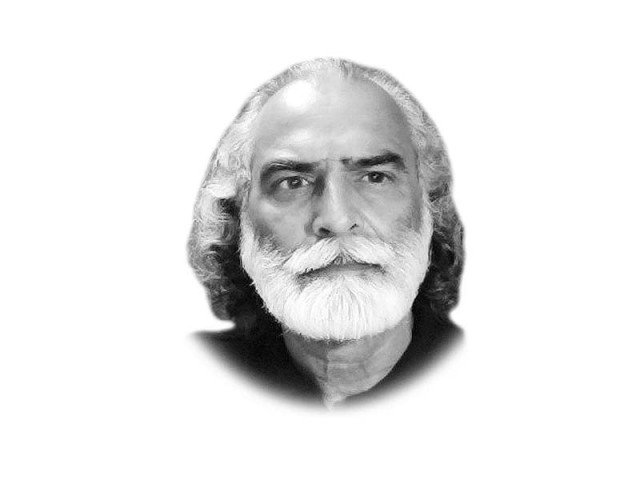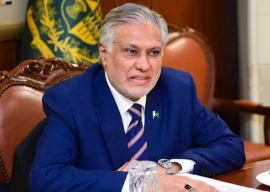
With the imposition of the Neo-liberal economic model, with the collapse of Soviet Union and by the adoption of capitalist model by China’s Communist Party, it became easier to crush the labour movements across the globe and to dismantle the welfare system. Since then the state has been enslaved by the super rich and no wonder inequality surged in advanced countries. By 2016 ‘the richest 10% in the OECD region earn 10 times the income of the poorest 10%’. Also during ‘the last 30 years wage inequality has increased substantially in the US. It has reached to pre-Great Depression level.’ In India, the ‘top 1% own 58% of wealth, while globally 1% own 51% of the total wealth.’ In Pakistan, according to a UNDP report, ‘inequality has increased as the richest 20% consumes seven times more than the poorest 20%.’
This was not the result of any natural process of the market forces but because of profound and naked cheating. The state now provides welfare to the rich — tax cuts and bailout packages. Social democracy replaced by capital democracy. Political groupings, despite electoral support from trade unions, shamelessly served the interests of the rich. They finally lost their relevance. It caused huge alienation and political vacuum. Like Hitler, bullies of the highest order of today — Donald Trump, Geert Wilders and Marine Le Pen, etc, exploited the situation. Not in the name of workers’ rights but by spreading fear of Muslims and immigrants. The angry and alienated peoples of the US, Holland and France found [false] solace in their dodgy rhetoric. Trump won, Wilders lost but not really and Ms Le Pen’s popularity is beyond any doubt.
Lesson — capturing a void is much easier in countries where democracy fails people, because in democracy freedom of speech, association and assembly provides huge space to hate preachers too. Consider also Modi’s rise in India. These Neo-fascists share two traits — hate against organised labour and the minorities.
Just consider this. In India, the US, France and the Netherlands Muslims are just 14.4%, 1.3%, 7% and 6%, respectively. But why does a huge and powerful majority need to discriminate against a tiny and marginalised minority? And why do certain sections of the majority and dominant communities would easily become willing soldiers of fascist leaders and why do huge number of people vote for them? Without going into its debate, long history of ethnic cleansing that had taken place frequently in the European continent and the contempt deepened prejudices and hate against the non-white people.
Despite building a humane narrative — multiculturalism, democratic values in the West, revival of deep down prejudices and fear of the other/s seems to be not so difficult. India and Pakistan are not different.
In this regard, Gordon Allport’s (1954) influential study ‘The Ladder of Prejudice’ could greatly help us to understand how prejudices and stereotyping could lead to violence and genocide. Despite passage of time and legislation hate crime persists in Western societies. For instance, ‘in England and Wales, the police recorded 52,102 hate crimes during 2009’ and soon after the Brexit referendum and Trump’s victory incidents of hate crime surged. France, Germany and Holland are also witnessing this ugly trend.
Studies show that ‘unemployed and economically inactive youth are more likely to be hate offenders.’ Also economic theories see ‘the roots of hate crime in displaced stress for scarce resources.’ Racist politicians know very well how to exploit these feelings. Consider Hitler and Bal Thackeray. Both abhorred conscientious and organised labour movement but would love to use them for their own political ends.
Karachi and Jhang also experienced the worst form of ethnic and sectarian divide in the labour movement.
It’s strange that instead of protesting against the economic policies for causing unemployment, the super rich employers and corrupt financial institutions, the racist leaders would blame some minority. This distorted reasoning could overwhelm the people’s imagination. By bringing the people to this state of mind, a tiny but extremely powerful minority — the racist leaders could inculcate false superiority amongst the majority population, this paves the way to win elections. Once in power, they would crush the labour movement in order to advance their narrow interests without facing any hurdle.
People of one country hardly learn from the people of other countries. But rulers do learn from one another. Though Pakistan is politically, culturally and historically different, our ruling classes can’t be different from the Western ones as far as the ‘divide and rule’ policy is concerned or for that matter targeting minorities. In Pakistan minorities constitute just 5% of its population. Yet, they are badly treated.
We should know that populism has always been a disaster. It has always caused fissures and bloodbath. We must also know populism has never been popular. Modi has only 31% of the polled votes. Our religious parties never crossed the 5% mark. Yet they are presented as popular.
So what is peoples’ narrative? First, a popular narrative must not target any sect, religion and ethnic group. It must develop human potential in order to promote humanity — reject greed and ugly competition — nurture human spirituality — when one feels pain of the other. It should also preserve nature and keep its balance.
Does our dominant narrative fulfill the above conditions? Hardly. Do we feel pain of the Baloch, Christians, Hindus, Ahmadis as much as we feel the pain of Kashmiris and working men and women? Of course not. Within a week Chief Minister of Punjab Shahbaz Sharif wrote two Op-Ed articles. He said in one that ‘our country is divided in two states. The one, which is in the custody of 10% rich elite. The other, where 90% of our poor people live. They suffer from all forms of miseries. This gulf must be bridged by giving ownership of assets to the 90%.’ His articles provides huge weight in building a pro-people narrative but may I ask you sir — who has stopped you from doing it as your family has been in power since 1985.
As a first step, let the trade unions organise in your province. Like it happened in Europe, here too democratic governance and welfare of the working people is strongly tied with strong labour movement. With the decline of labour movement, welfare state will wither away. A lesson emerging from the US and Britain. Let’s harvest this lesson.
Published in The Express Tribune, April 6th, 2017.
Like Opinion & Editorial on Facebook, follow @ETOpEd on Twitter to receive all updates on all our daily pieces.






1726054615-0/OpenAI-(2)1726054615-0-270x192.webp)






COMMENTS
Comments are moderated and generally will be posted if they are on-topic and not abusive.
For more information, please see our Comments FAQ